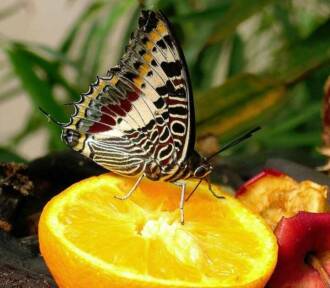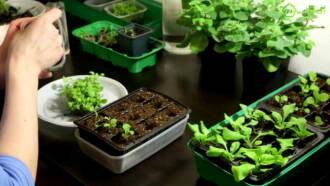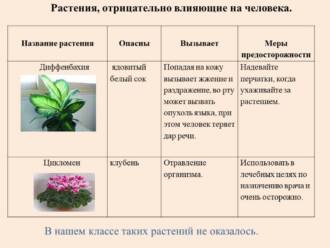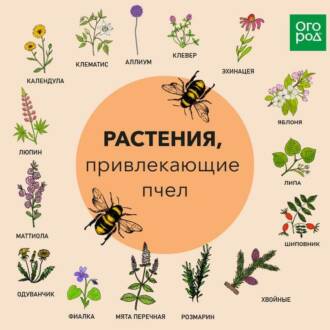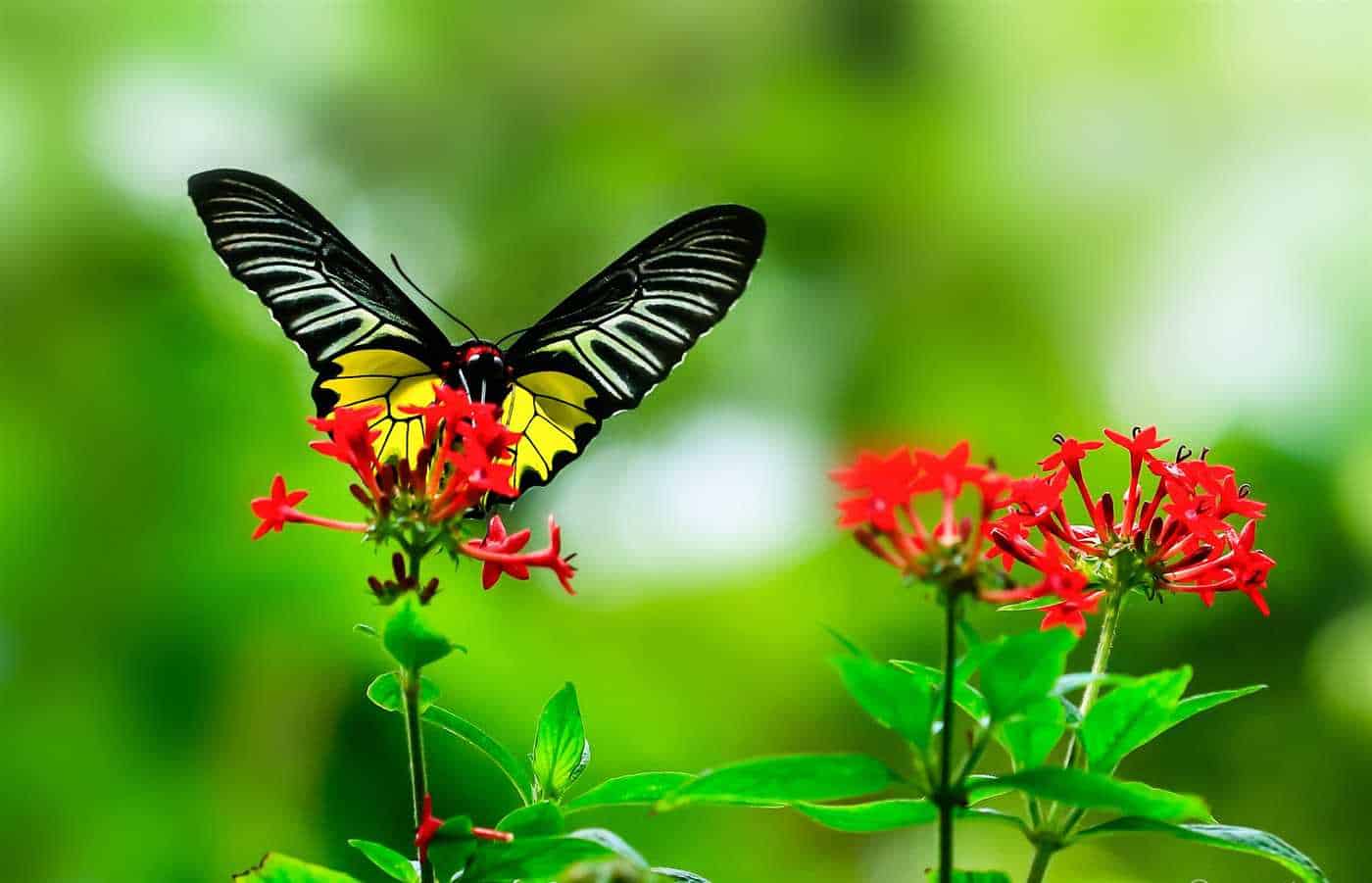
Butterflies are some of nature's most beautiful creatures. Their wings are decorated with bright and varied patterns that reflect all the colors of the rainbow. Watching these colorful insects can be an amazing experience that brings a lot of joy and peace.
One way to attract butterflies to your garden is to grow flowers that contain saps that attract these colorful insects. This can be done by choosing certain types of plants that attract butterflies with their bright and fragrant flowers.
One such plant is the perennial mallow. Its bright flowers attract butterflies that feed on its sweet nectar. Another attractive plant for butterflies is kosmeya. Its flowers are vibrant shades of orange and yellow that attract the attention of insects. In addition, the cosmea also has sweet nectar, which is a food source for butterflies.
Other attractive plants for butterflies are asters, liatris and rudbeckia. These flowers have bright and colorful petals that attract the attention of butterflies. In addition, they also contain sweet nectar, which is a food source for these insects.
Growing flowers that attract butterflies can be a fun and enjoyable activity for gardening enthusiasts. This allows not only to create a beautiful and unique garden, but also to witness the colorful dance of butterflies, which brings a lot of joy and admiration.
Therefore, if you want to decorate your garden with colorful insects and enjoy their wonderful beauty, look for those plants that contain juices that attract butterflies. Create a unique garden that will delight the eye and heart of everyone who sees it.
Secrets of Growing Flowers to Attract Butterflies
Butterflies are not only beautiful and delicate creatures, but also useful plant pollinators. If you want to attract these colorful insects to your garden, then you need certain flowers that draw their attention.
Choosing a place for planting flowers
The first secret to successfully growing flowers to attract butterflies is choosing the right location. Butterflies prefer sunny and warm places, so open areas of the garden should be chosen for planting flowers. Avoid shady areas as butterflies prefer sunlight.
Choosing colors to attract butterflies
One of the main secrets to attracting butterflies is choosing the right flowers. Butterflies are attracted to bright and fragrant flowers, especially those that contain nectar. Some of the best flowers for attracting butterflies are asters, buzulniks, dahlias, mallows, phlox, and daylilies. They have attractive flowers and produce abundant nectar.
flower care
To successfully grow flowers to attract butterflies, proper care is required. Regular watering and fertilizing will help keep plants healthy and beautiful. It is also worth considering that butterflies prefer flowers without chemical fertilizers or pesticides. Therefore, if you want to attract butterflies to your garden, it is recommended to use only natural fertilizers and pest control methods.
Creating a favorable environment for butterflies
In order to attract butterflies to your garden, it is important to create a favorable environment for them. Leave small areas of the garden uncultivated so that the butterflies can lay their eggs and develop. You can also install special food plants for caterpillars, which are food for butterflies at the stage of their development.
By following these tips, you can create an attractive place for butterflies in your garden. Enjoy the beauty and grace of these insects that will delight you with their presence and help pollinate your flowers.
Selection of succulent plants
If you want to attract butterflies to your garden, it is important to choose the right succulent plants. Butterflies are attracted to plants that contain nectar rich in sugar and other nutrients.
One of the best choices for attracting butterflies are flowers with bright and fragrant flowers. Butterflies usually prefer flowers with red, orange, purple or yellow hues. Such flowers attract their attention and help them easily find their food source.
Among the succulent plants that attract butterflies, one can distinguish such popular species as:
- butterfly tree - is a shrub with bright flowers that attracts a wide variety of butterflies with its sweet nectar.
- Lavender - This is a fragrant plant with purple flowers that attract butterflies with their sweet scent.
- Daisy — is a flower with white petals and a yellow center that attracts butterflies with its nectar.
By choosing the right succulent plants, you can create an attractive place for butterflies to enjoy the sweet nectar and bring beauty to your garden.
Preparing the soil for growing flowers

Soil preparation is an important step in growing flowers. The quality of the soil directly affects the growth and development of plants, as well as their ability to attract butterflies. It is important to consider several aspects when preparing the soil.
Soil selection
To successfully grow flowers that attract butterflies, you need to choose the right soil. The best option is garden soil with good drainage. The soil must be fertile and contain enough plant nutrients.
Soil pH Determination
Before sowing flowers, it is necessary to determine the pH of the soil. Most flowers prefer a neutral or slightly acidic environment. If soil pH is too high or too low, plants may have difficulty absorbing nutrients. In this case, it is necessary to make appropriate changes to the soil.
soil fertilization
To ensure sufficient plant nutrition and attract butterflies, it is necessary to fertilize the soil. It is recommended to use organic fertilizers such as compost or humus. They will enrich the soil with essential nutrients and help it retain moisture.
Soil loosening
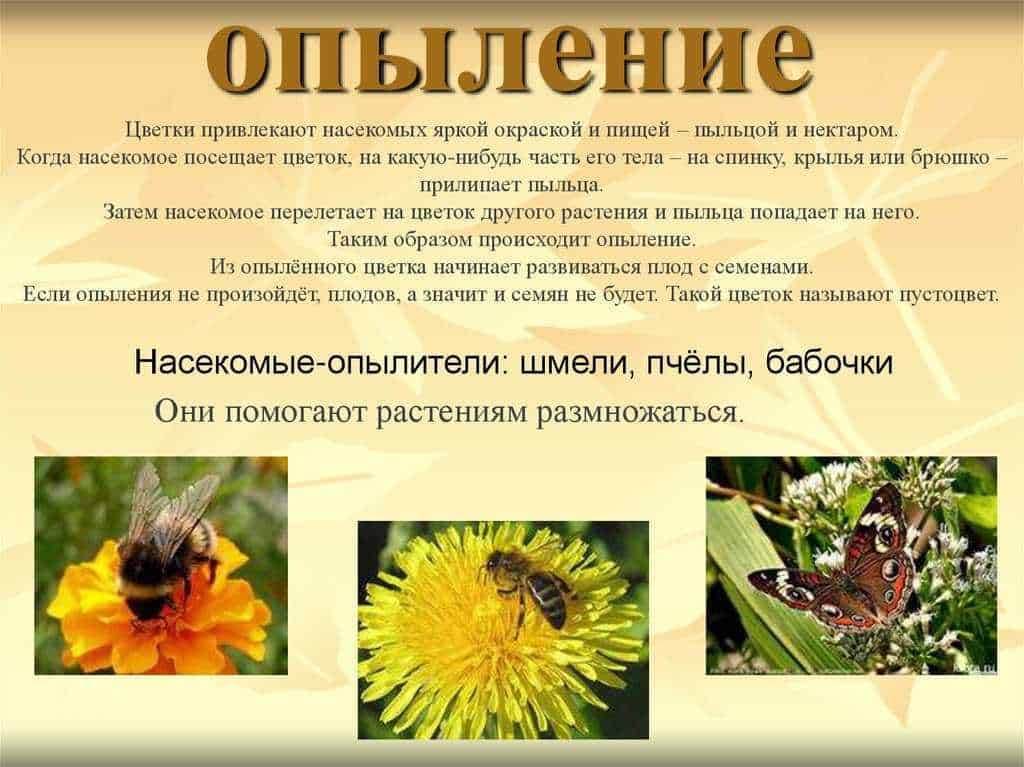
Before sowing flowers, it is necessary to loosen the soil. This will improve its structure and provide better air and moisture circulation. Loose soil also makes it easier for plant roots to penetrate deeper into the soil, which encourages more vigorous plant growth.
Weed removal
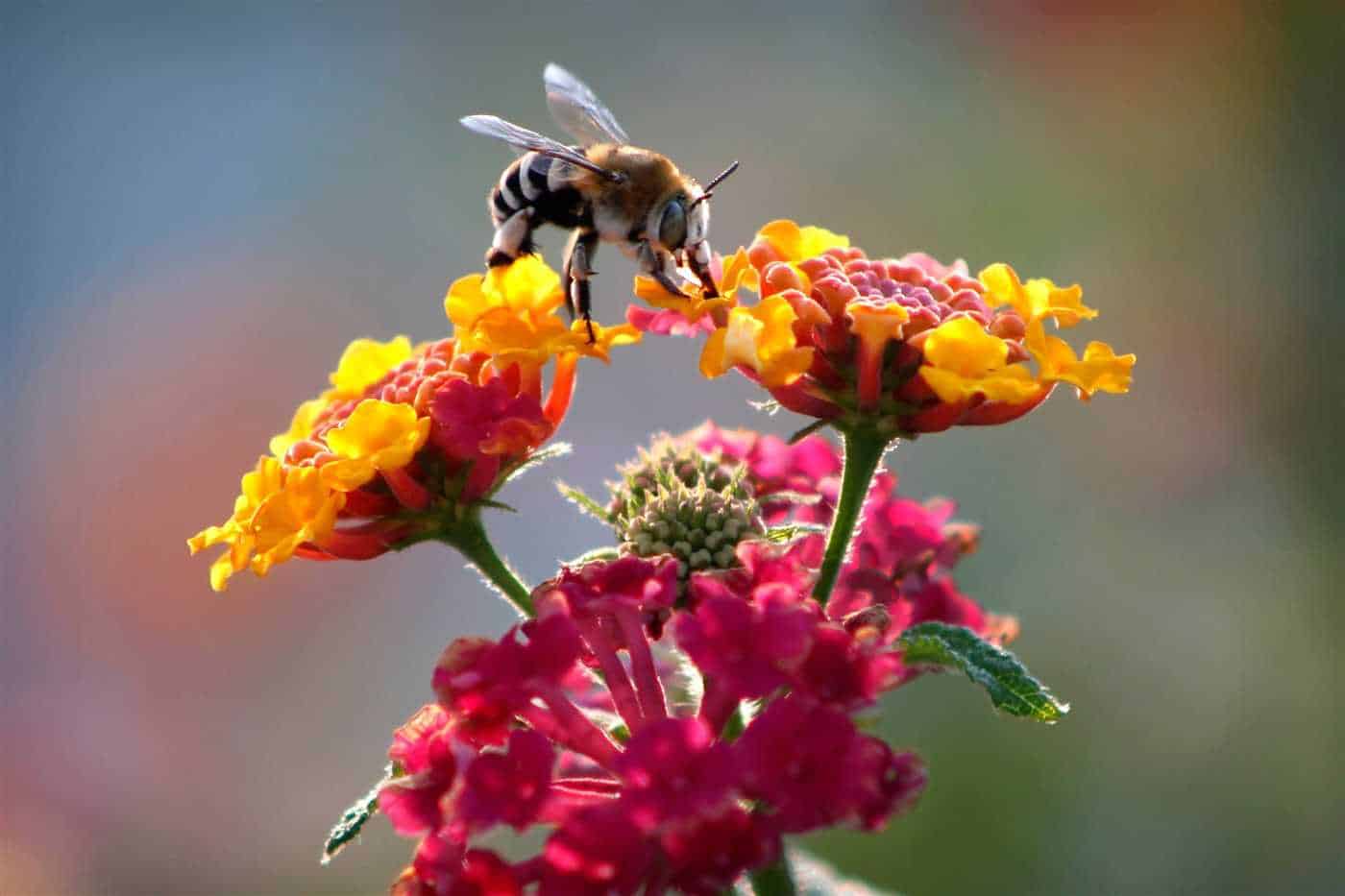
Before planting the flowers, weeds and other plants that may compete with the flowers for nutrients and space should be removed. Weeds can also attract pests that can harm plants. Regular removal of weeds will provide optimal conditions for the growth and development of flowers.
The right choice of place for planting flowers
Choosing a place for planting flowers is an important step and determines their further development and prosperity. A well-chosen location will encourage plant growth and flowering, as well as attracting butterflies and other insects.
Definition of lighting
The first step in choosing a place to plant flowers is to determine the level of lighting. Some flowers prefer full sun, while others do best in partial shade or shade. Use this information to choose the right location for each type of flower.
Soil and moisture accounting

In addition to lighting, soil type and moisture levels must also be taken into account. Some flowers prefer fertile, nutrient-rich soils, while others prefer drier, sandier soils. Also note that some flowers thrive in damp conditions, while others prefer dry climates.
Study the soil and moisture requirements of each type of flower and choose the site that best meets these requirements.
Wind and temperature protection
Also pay attention to protection from wind and temperature changes. Strong winds can damage delicate flowers, so choose a location that is sheltered from strong winds. Also avoid places with frequent and sudden changes in temperature, as this can adversely affect the health and growth of plants.
Choosing a place to plant flowers requires attention to detail and consideration of various factors. Choosing the right location will help create optimal conditions for plants to grow and thrive, as well as attract butterflies and other insects to your garden.
Regular watering of flowers
One important aspect of growing flowers that attract butterflies is regular watering. Water plays an important role in the life of plants, and its lack can adversely affect their growth and development.
To ensure proper watering of flowers, several factors must be considered. First, you need to determine the optimal frequency of watering. Each type of plant has its own characteristics and requires an individual approach. Some flowers need daily watering, while others may need less.
Secondly, it is necessary to take into account the watering time. The best time to water plants is morning or evening, when the sun is not so active. This will help to avoid overheating and leaf burns, as well as reduce moisture evaporation. In addition, it is recommended to water the flowers at the root so that the water gets directly to the roots of the plants.
Another important aspect of regular watering is moderation. Overwatering can lead to waterlogging of the soil and rotting of the roots. Therefore, it is necessary to monitor the condition of the soil and water the flowers only when necessary.
Fertilizer to stimulate growth
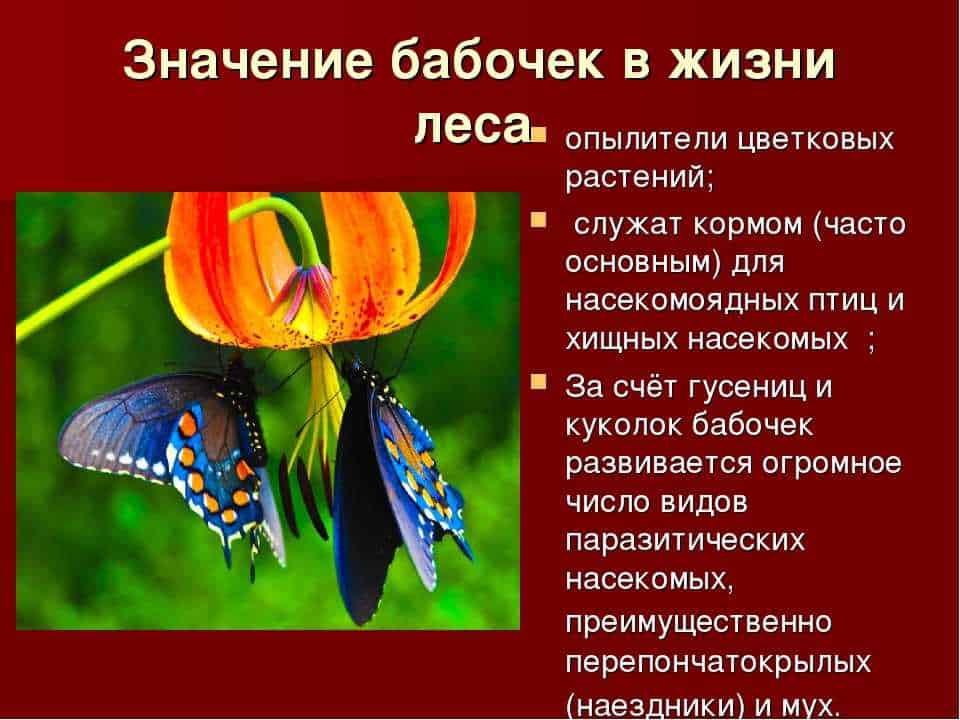
When it comes to growing flowers, fertilizer plays a key role in encouraging them to grow. Fertilizer is a source of essential nutrients for plants that they cannot obtain from the soil in sufficient quantities.
To achieve maximum flower growth and development, choose a fertilizer that contains all the essential micronutrients such as nitrogen, phosphorus and potassium. These elements not only promote the formation of new cells, but also improve flowering and strengthen the roots of plants.
In addition to the essential micronutrients, the fertilizer may also contain additional nutrients such as magnesium, iron, and copper. These elements help plants absorb essential nutrients and improve their overall health and resistance to diseases and pests.
For best results, follow the instructions for applying the fertilizer and do not overdo it. Monitor the condition of plants and their response to fertilizer. If you notice signs of nutrient overload or deficiency, adjust your dosage or choose a different fertilizer.
Protection from pests and diseases
Growing flowers that attract butterflies requires care and attention to protect plants from pests and diseases. There are several methods to help keep your flowers healthy and beautiful.
1. Proper watering
Waterlogging or overdrying of the soil can cause various problems. Excessive moisture can cause root rot, and lack of moisture can cause plants to dry out and wilt. Keep the soil moist, water the plants regularly, but do not overdo it.
2. Removal of affected plant parts
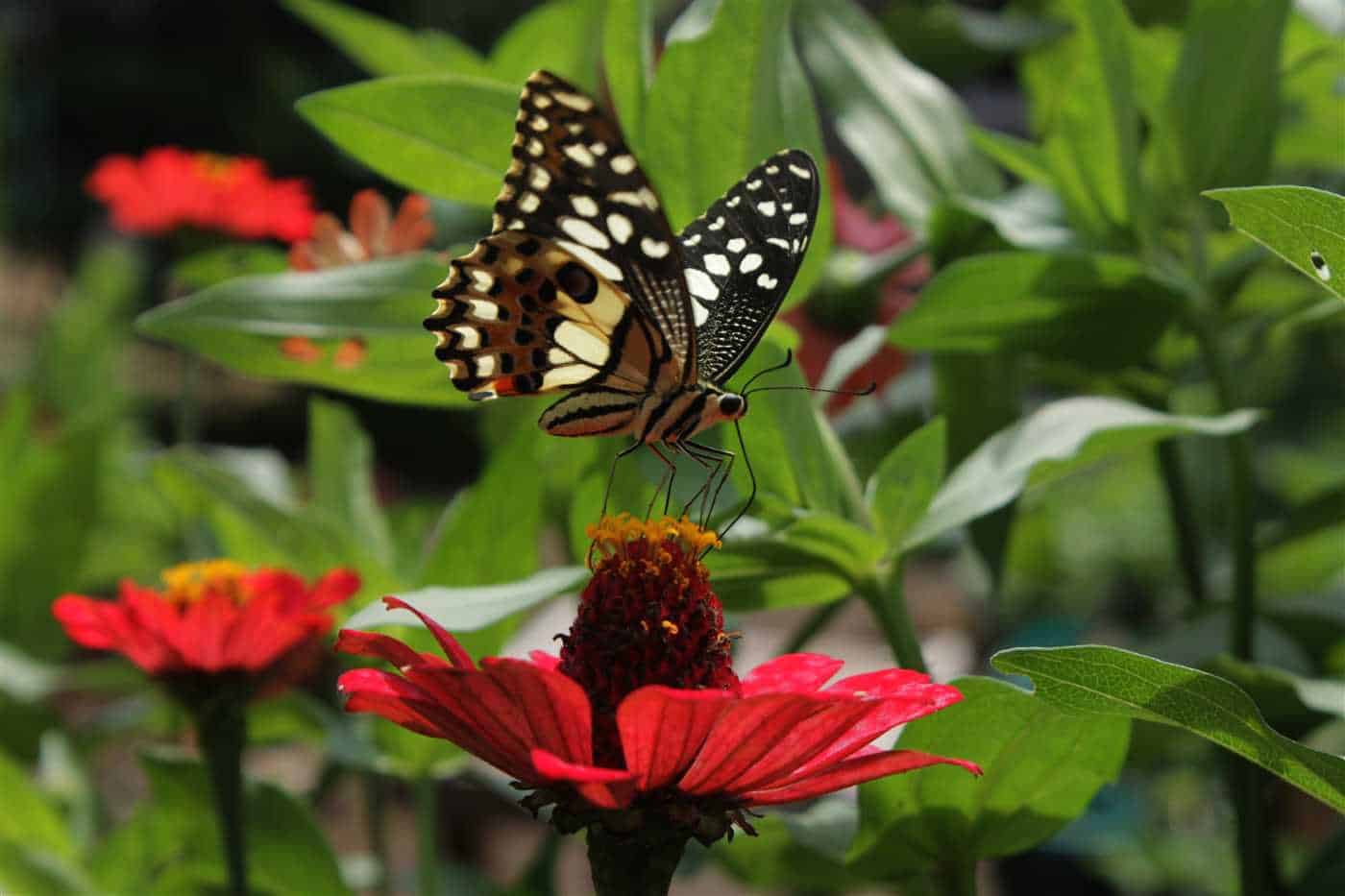
If you notice damage to plants by pests or diseases, immediately remove the affected plant parts. This will help prevent the spread of infection and save the rest of the healthy parts of the plant.
3. Application of natural enemies of pests
The use of chemical pesticides can harm beneficial insects, including butterflies. Instead, try using natural pests such as frogs, birds, or carnivorous insects. They will help control pests and keep your garden healthy and environmentally friendly.
4. Variety of plants
Planting different types of plants in your garden can help protect them from pests and diseases. Some plants can repel insect pests with their smell or the content of certain substances. Plant diversity also promotes biological balance, which helps maintain a healthy environment for butterflies to grow.
By following these simple tips, you can protect your flowers from pests and diseases while creating an attractive and safe place for butterflies.
Optimal planting time
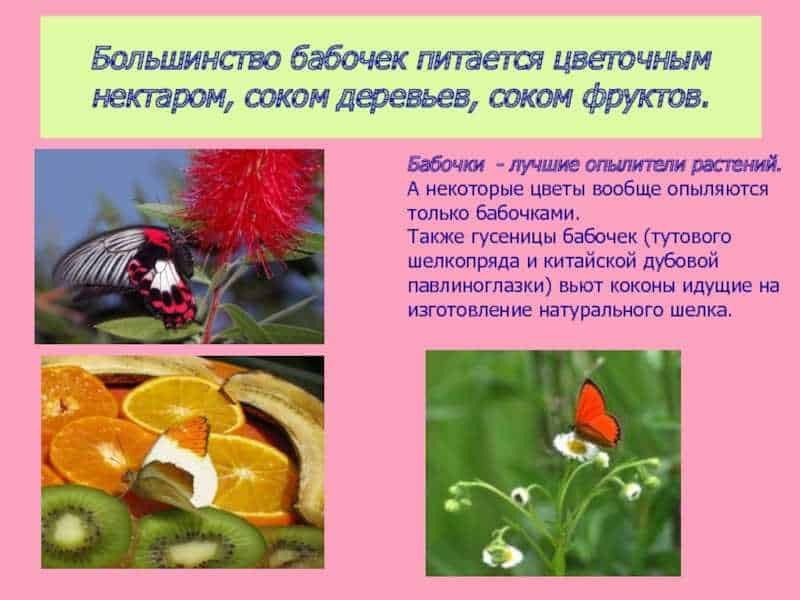
The optimal time to plant flowers depends on many factors, including climatic conditions and plant type. But in general, it is recommended to plant flowers in spring or early autumn, when the soil is sufficiently warm and moist.
Spring is the ideal time to plant most flowers. At this time of year, the soil warms up after winter, and plants begin to actively grow. Early spring, when there is no frost yet, is a particularly favorable period for planting flowers, as they have enough time to root and develop before the onset of hot summer.
Autumn is also a good time to plant flowers. At this time of the year, the soil is still warm, but not as hot as in summer. This creates optimal conditions for fast and healthy rooting of plants. In addition, in autumn, plants have more time to root and prepare for winter.
However, it should be borne in mind that each type of flower has its own characteristics and may require a certain planting time. For example, some flowers, such as tulips or daffodils, are best planted in the fall so they can go through a period of cold dormancy and bloom in the spring. At the same time, other flowers, such as petunias or begonias, are best planted in the spring so that they can grow quickly and bloom in warm weather.
In general, for optimal results, it is recommended to follow the planting recommendations given on the seed package or when purchasing plants from a garden center. It is also worth considering local climatic conditions and soil features on your site. By following these guidelines, you can create a colorful garden that will attract butterflies and other beneficial insects.
Maintaining the optimal temperature

The optimum temperature plays an important role in attracting butterflies to the garden. Plants that produce juices that attract butterflies need certain conditions to thrive.
To maintain the optimum temperature, it is important to choose the right place for planting flowers. They must receive sufficient sunlight, but at the same time be protected from direct rays during periods of extreme heat. Suitable planting sites may be under trees or near fences that provide partial shade and protect from the scorching sun.
It is also important to take into account the seasonality and climatic conditions of your region. Some butterfly attracting plants may be more sensitive to cold or heat. It is recommended to choose flowers that are well adapted to your region and able to survive extreme temperatures.
For additional protection from bad weather and extreme temperatures, special shelters or greenhouses can be used. This will help maintain a stable temperature and protect the plants from adverse conditions.
It is important to monitor the temperature of the air and soil to provide optimal conditions for the growth and prosperity of plants. Check the temperature regularly and, if necessary, take measures to regulate it.
By maintaining the optimum temperature, you will create the ideal conditions to attract butterflies to your garden and enjoy their beauty and presence.
Proper pruning and shaping plants
Proper pruning and shaping of plants is an important step in the process of growing flowers that attract butterflies. This allows you to create a beautiful and healthy plant composition that will attract insects and delight the eye with its appearance.
Before you start trimming, you must determine the purpose of this procedure. Pruning can be done to form a bush of the plant, strengthen the stems, remove damaged or diseased parts, and also to stimulate flowering. Each type of plant has its own pruning characteristics, so it is important to familiarize yourself with the recommendations for each specific type.
However, there are a few general rules to keep in mind when pruning and shaping plants. First, you need to use sharp and clean tools to avoid infecting the plant with diseases. Secondly, pruning should be carried out during the rest of the plant, that is, during the period when growth slows down. It is also worth remembering that too intensive pruning can adversely affect the health of the plant, so it is better to gradually cut off small parts.
Proper pruning and shaping of plants will help create a beautiful and healthy garden arrangement that will attract butterflies and delight the eye with its appearance. By following the recommendations for pruning and plant care, you can achieve optimal results and enjoy the beauty of your garden.
Attracting butterflies with aromatic oils
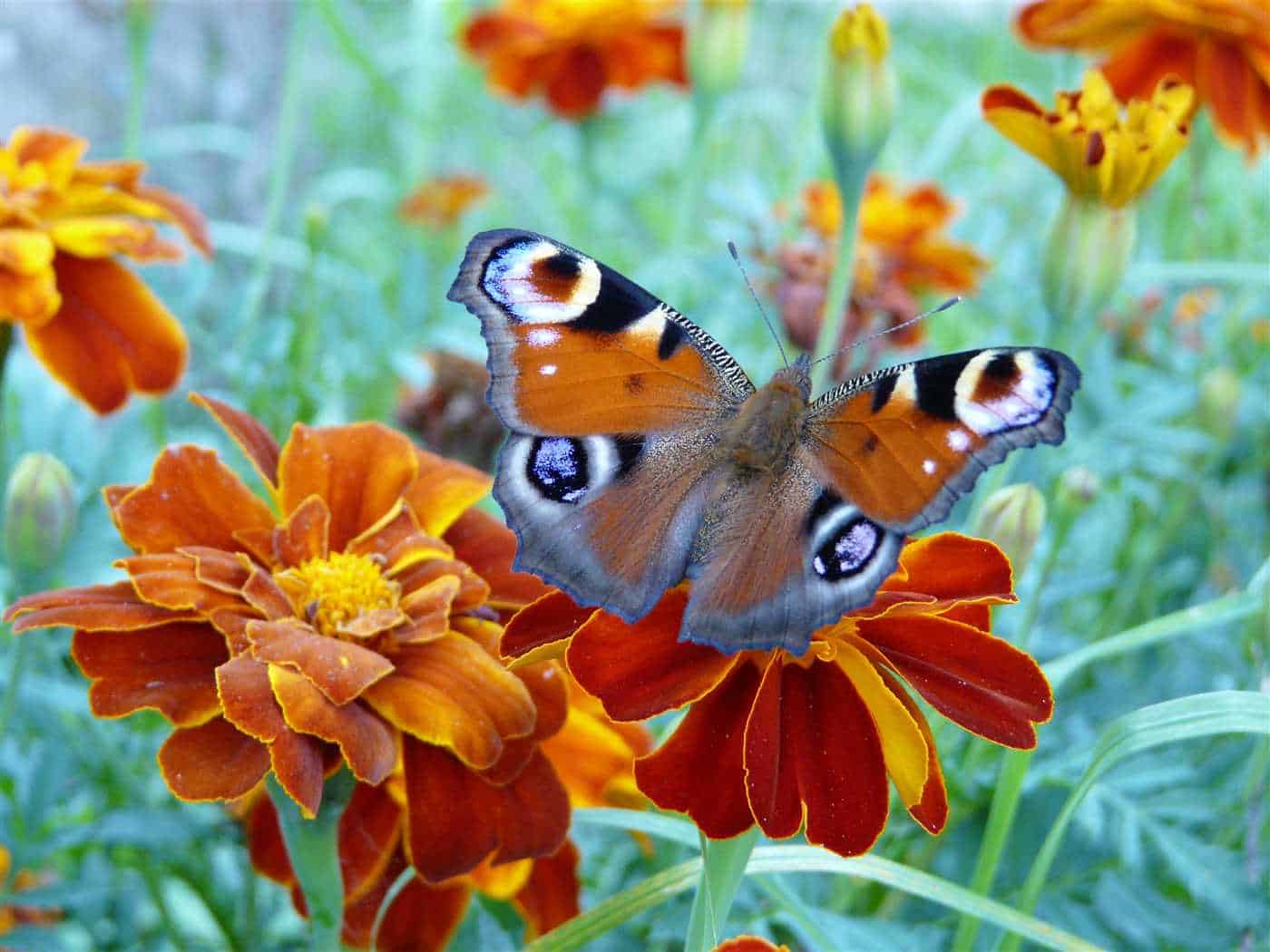
Attracting butterflies to the garden can be done not only with the help of flowers, but also with the use of aromatic oils. Butterflies are sensitive to scents, so scented oils can be an effective way to attract these colorful insects.
Selection of aromatic oils
Various scented oils can be used to attract butterflies. Citrus oils such as lemon, orange or grapefruit are especially attractive to them. Also popular choices are lavender, rosemary, and peppermint oils.
The use of aromatic oils
To attract butterflies with aromatic oils, you can use the following methods:
- Applying oil to flowers: A small amount of oil can be applied to flower petals that attract butterflies. This will help enhance the scent and attract insects.
- Using Scented Traps: You can create a butterfly trap by mixing scented oil with sweet syrup or fruit juice. Put this mixture in a container and place it in the garden. Butterflies will be attracted to the scent and remain trapped.
- Spraying oil around the garden: You can spray scented oil around the garden to create an atmosphere that attracts butterflies. This can be done with a special spray or aerosol.
It is important to remember that scented oils should be used sparingly and in small amounts so as not to overpower the flowers' natural scents and attract other insects that you don't want to have in your garden. Also keep in mind that butterflies can be attracted not only by smells but also by flowers, so a combination of different methods may be the most effective way to attract these beautiful insects.
Maintaining an ecological balance in the garden
Maintaining the ecological balance in the garden is an important task to preserve the diversity and health of plants, animals and insects. The impact on the environment can have a negative impact on the ecosystem of the garden, so measures must be taken to minimize negative effects.
One of the key aspects of maintaining the ecological balance in the garden is the use of natural pest and plant disease control methods. Instead of chemical pesticides and herbicides, it is recommended to use biological preparations and natural methods of plant protection. For example, you can use insect predators that will naturally control the pest population.
It is also important to create favorable conditions for the reproduction and residence of beneficial insects such as butterflies. To do this, you can plant plants that attract butterflies with their flowers and smell, for example, lavender, mint or young flowers. You should also provide places for resting and breeding of butterflies, for example, install special butterfly houses.
Organic cultivation of plants also contributes to maintaining the ecological balance in the garden. Avoiding the use of chemical fertilizers and pesticides helps conserve the natural resources of soil and water, and prevents the accumulation of harmful substances in the environment. Instead, it is recommended to use compost and organic fertilizers that nourish the plants and promote healthy growth.
In general, maintaining the ecological balance in the garden requires attention and care, but it allows you to create a healthy and sustainable environment for plants, animals and insects. This is important not only for the beauty and diversity of the garden, but also for the conservation of natural resources and biodiversity in general.

